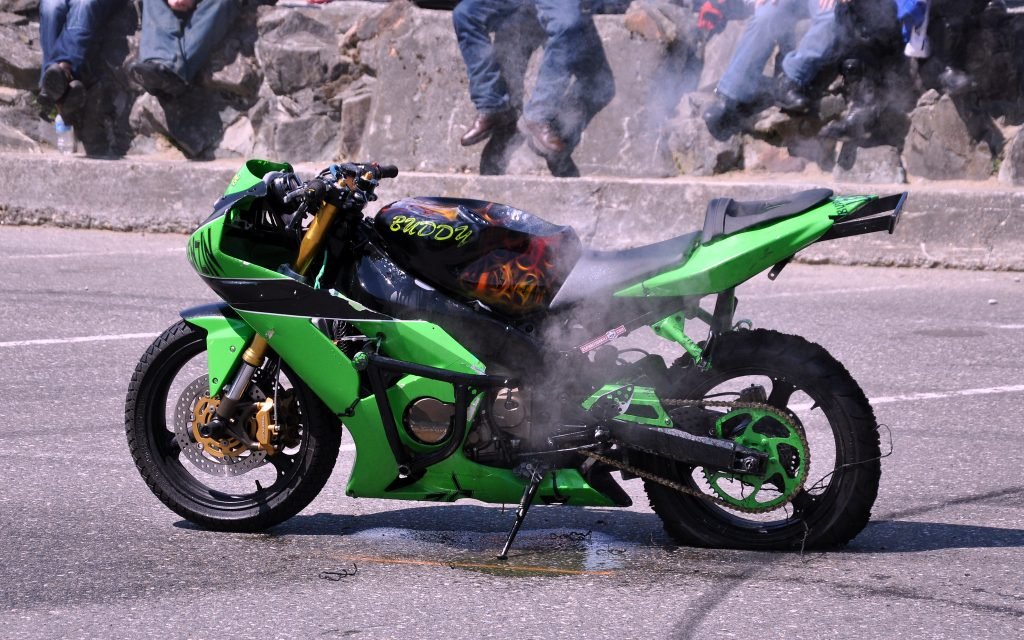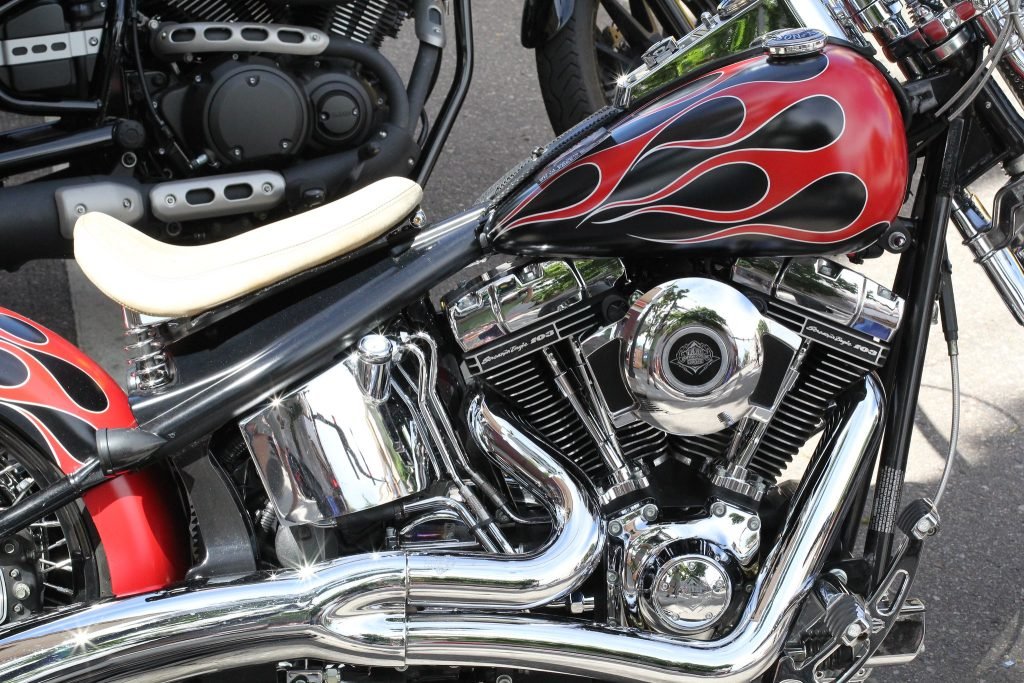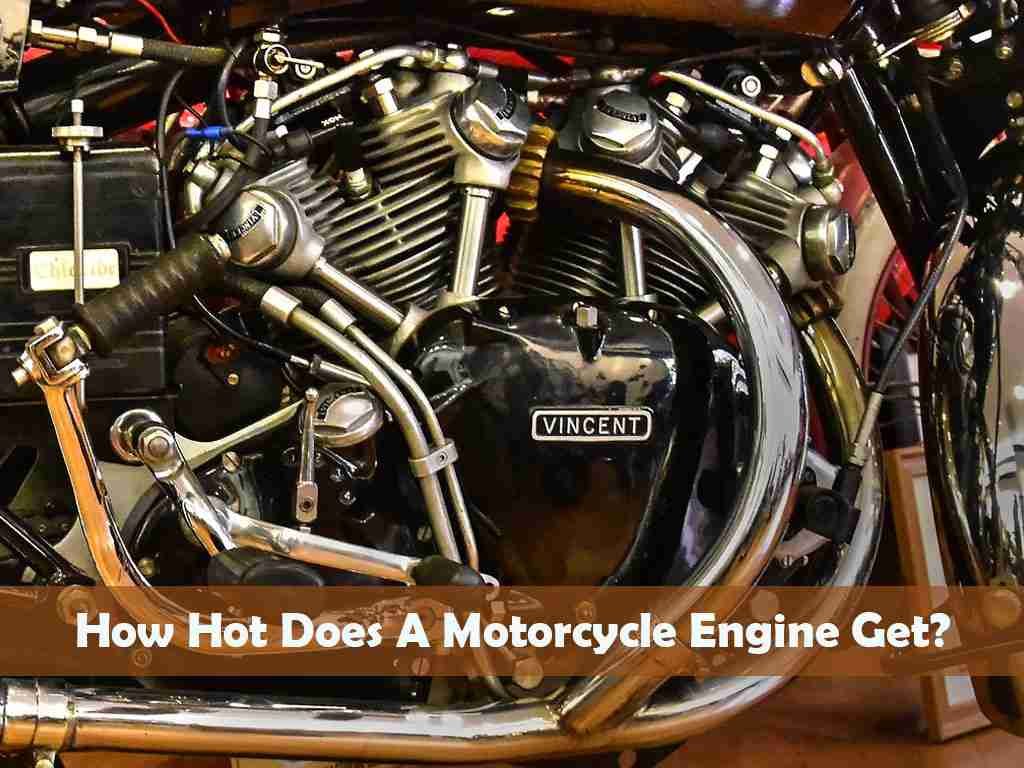A motorcycle engine can get pretty hot – especially when it’s been revving up and down the road for a while.
But how hot does a motorcycle engine get? The average temperature range for a motorcycle engine is between 175-225 degrees Fahrenheit. However, some engines have been known to exceed 300 degrees Fahrenheit under normal riding conditions.
On a hot day, the engine of a motorcycle can get very hot. The engine is located right under the seat, so it is close to the rider. This can make the engine temperature rise quickly.
The engine temperature can get so hot that it can cause the motorcycle to stall. This can be dangerous for the rider and can cause an accident. It is important to be aware of how hot the engine can get and to take precautions when riding on hot days.
Why does a motorcycle engine get hot? 9 Reasons

There are many reasons that a motorcycle engine may get too hot. The most common reason is due to the engine not being able to properly dissipate the heat that it generates while running. This can be caused by several factors, including:
1. Insufficient cooling system capacity
If your cooling system can’t keep up with the amount of heat your engine is generating, it will eventually overheat. This is often caused by a coolant leak, a clogged radiator, or a failed water pump.
2. Blocked airflow
The heat generated by your engine will be difficult to remove if the airflow around it is restricted. You can experience this problem if you have a dirty air filter, a bent cooling fan blade, or a fairing blocking the airflow.
3. Lean fuel mixture
Whenever your engine runs lean (too much air, not enough fuel), more heat will be generated. A dirty air filter, a vacuum leak, or a faulty oxygen sensor can cause this problem.
4. Ignition timing that’s too advanced
Overly advanced ignition timing can cause your engine to run hotter than normal. In most cases, this occurs when the distributor cap or rotor is worn, the spark plug gap is incorrect, or the ignition coil is weak.
5. Restricted exhaust flow
An overheated engine can be caused by a restricted exhaust system. Catalytic converters can clog, mufflers can fill with soot or exhaust pipes can bend.
6. Overheated oil
Overheating your oil can cause it to break down and damage your engine. An oil cooler clog, incorrect oil viscosity, or excessive idling are often responsible for this problem.
7. Slipping clutch
In the event of slipping clutches, your engine will rev up excessively, which will generate excessive heat. Pressure plate damage or worn clutch plates are common causes of this problem.
8. Dragging brakes
Your engine can overheat if your brakes are dragging. Brake pads that have seized or are stuck are commonly the cause of this problem.
9. Overheated coolant
When your coolant gets too hot, it can boil over and cause your engine to overheat. There are a variety of causes for this problem, including leaking radiator caps, faulty radiator caps, or faulty water pumps.
What are the consequences of a motorcycle engine if it gets hot?
If a motorcycle engine gets hot, it can cause the engine to seize up and break down. The heat can damage the engine’s internals, leading to decreased performance and increased wear and tear. If the problem is not addressed, it can eventually lead to engine failure. There are the following possible consequences:
1. Increased risk of seizure
The engine can suffer from piston seizure, connecting rod failure, crankshaft failure, and head gasket failure. These failures can cause the engine to seize up, and they can also lead to costly repairs. If the engine seizes while you are riding, you could lose control of the bike and crash.
2. Decreased performance
The heat can cause the engine to lose power and torque. This can make it difficult to ride at high speeds or to accelerate quickly.
3. Increased wear and tear
The heat can cause increased wear and tear on the engine’s internals, leading to premature failure.
4. Engine failure
If the problem is not addressed, it can eventually lead to engine failure. This can be costly to repair and may require a complete engine rebuild.
5. Safety concerns
If the engine seizes due to extreme heat while you are riding, you could lose control of the bike and crash. This could lead to serious injury or death.
6. Catch a fire
Motorcycle engines can catch fire if they get too hot. In particular, leaking oil or other flammable fluids can cause this problem. A fire can spread quickly and cause extensive damage to the bike, as well as any nearby property. It can also be dangerous for anyone nearby.
7. Environmental concerns
A motorcycle engine that gets too hot can release harmful pollutants into the air. These pollutants can contribute to air pollution and climate change. They can also be harmful to human health, causing respiratory problems and other health issues
8. Increased fuel consumption
If the engine is not running at peak efficiency due to overheating, it can consume more fuel than necessary. This can lead to increased costs for the rider, as well as increased emissions of harmful pollutants.
10. Cause an explosion
An explosion can occur if the engine gets too hot. An accumulation of flammable fluids, such as oil or gas, is most likely to cause this. An explosion can cause extensive damage to the bike, as well as anyone nearby. It can also be dangerous for the environment.
11. It can warp or melt engine parts
A too-hot engine can warp or melt engine parts. This can cause the engine to seize up and break down. The heat can also damage the engine’s internals, leading to decreased performance and increased wear and tear. If the problem is not addressed, it can eventually lead to engine failure.
12. It damages the battery
The battery can be damaged if the motorcycle engine gets too hot. This can cause the bike to lose power and eventually stall. If the problem is not addressed, it can eventually lead to battery failure.
What to do if your motorbike overheats?

If your motorbike overheats, it is imperative to take action immediately to avoid further damage. Here are some steps to take:
1. Pull over and turn off the engine
As soon as you notice that your motorbike is overheating, pull over and turn off the engine. This will help prevent further damage.
2. Let the bike cool down
Once you have turned off the engine, let the bike sit for a few minutes to allow it to cool down. Do not attempt to remove any parts from the bike while it is still hot.
3. Check the radiator and cooling system
Once the bike has cooled down, check the radiator and cooling system for any leaks or blockages. If you notice any leaks, try to repair them using a sealant.
4. Add coolant
Add coolant to the system if the radiator and cooling system is in good condition. By doing this, you will be able to keep the engine cool.
5. Restart the engine
Once you have added coolant, restart the engine and allow it to run for a few minutes. This will help circulate the coolant and prevent the engine from overheating.
If your motorbike continues to overheat, it is prudent to take it to a mechanic to have it checked out. There may be a more serious problem that needs to be fixed.
How do prevent you your bike from overheating?
To prevent your motorbike from overheating, it is wise to regularly check the coolant level and make sure there is adequate airflow around the engine. Make sure the radiator is full of coolant and that there are no leaks.
Then, check the radiator hoses to ensure that they are not blocked or leaking. Also, check the fan to make sure it is working properly.
Additionally, riders should avoid extended periods of high-speed operation or idling, as this can cause the engine to overheat. If the engine does get too hot, it is wise to stop immediately and allow it to cool down before continuing.
Following these tips can help prevent your motorbike from overheating and avoid the consequences of an overheated engine.
FAQs
Conclusion
So, next time you’re out riding your motorcycle, remember that the engine is working hard to keep you moving and it’s getting pretty hot in there! Be sure to give it a break every once in a while so it doesn’t overheat. And if you’ve ever wondered just how hot it gets in there, now you know where to look.
Thanks for reading!
